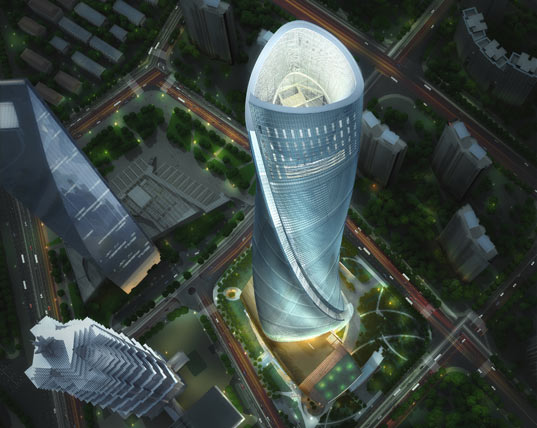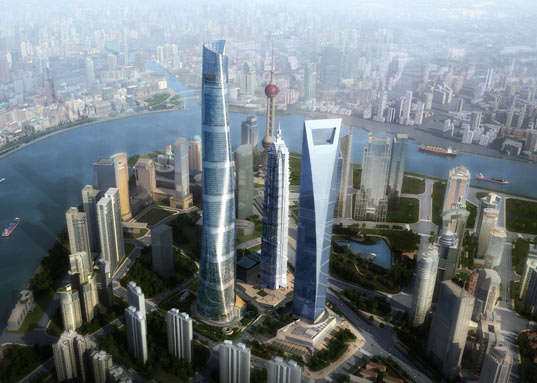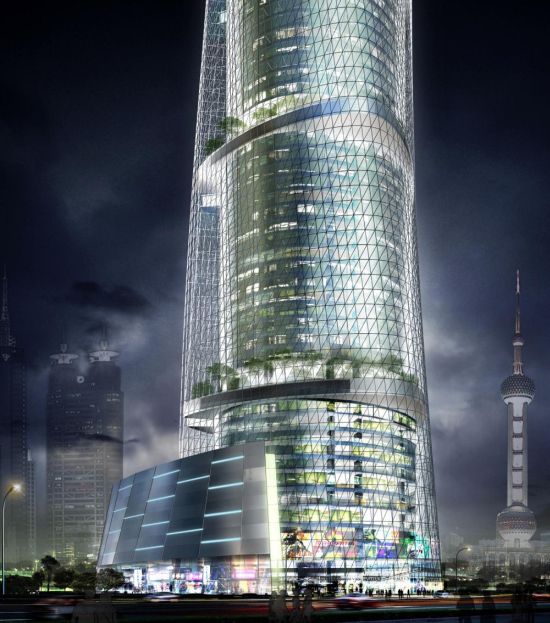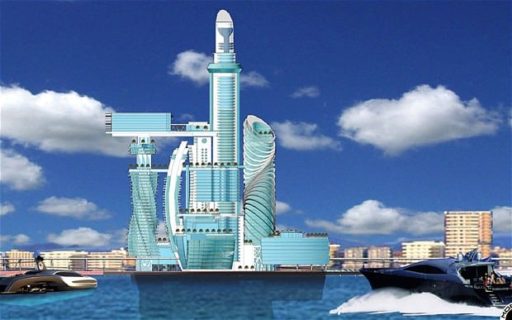The Shanghai Tower, set to reach a whopping 632 meters by the time it’s completed, broke ground over the weekend. With its zenith a full 140 meters higher than the Mori Building (currently the world’s highest observatory), it’ll grab the honors of the tallest building in China.
Gensler’s latest skyscraper will grace the skyline of Shanghai’s Luijiazui Finance and Trade Zone, an area that was predominantly farmland just eighteen years ago. The region is now poised to become China’s first super-tall district as the Shanghai Tower joins the Jin Mao Tower and the Shanghai World Finance Center.
The Shanghai Tower is composed of a set of nine cylindrical buildings stacked on top of each other and surrounded by an inner façade. A triangular outer façade encloses the entire structure, creating room for nine sky gardens, which serve as public spaces. The mixed-use structure will house businesses, restaurants, cafés, coffee shops and convenience stores.
The skyscraper’s twisting, asymmetrical envelope features a carefully considered structure and texture that work together to reduce wind loads on the building by 24%, saving building materials and construction costs. The building’s spiraling parapet collects rainwater to be used for the tower’s heating and air conditioning systems, and wind turbines situated below the parapet generate on-site power. Additionally, the gardens nestled within the building’s double-skin façade create a thermal buffer zone while improving indoor air quality.
A lot of folks over here are saying that no matter how bad the current economic situation might get, the chances of this project losing funding is very slim. Ironically, this is probably due to the Mori Building, whose own construction was halted in its tracks by the Asian Financial Crisis—even if The Shanghai Tower turns out to be a money loser, there’s no way the Chinese would’ve stood for having a Japanese building dominate their soil.






